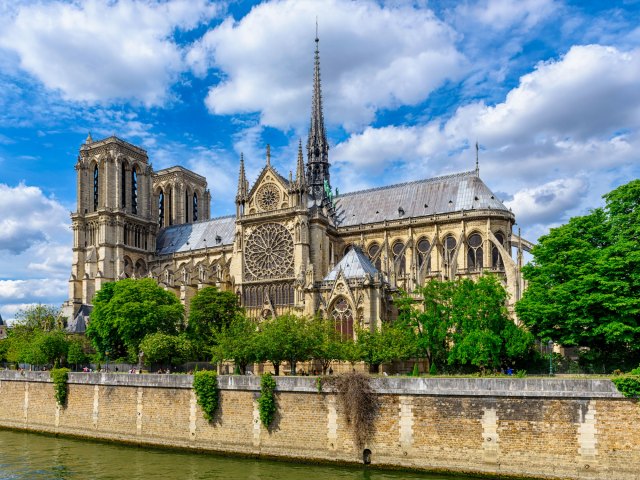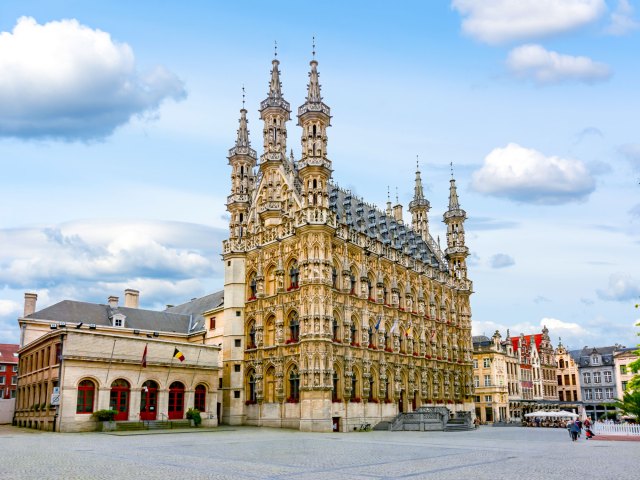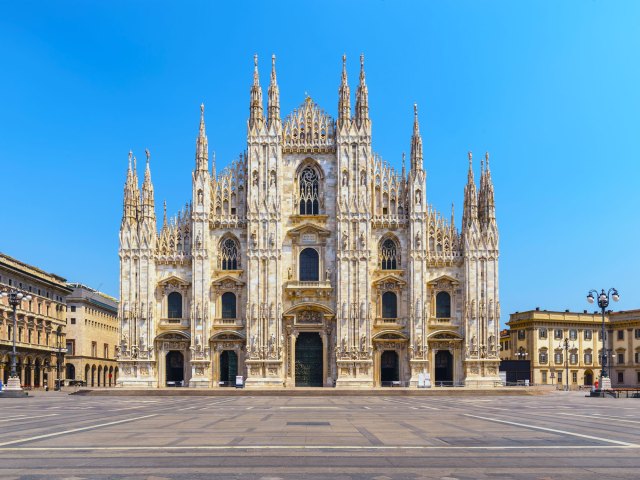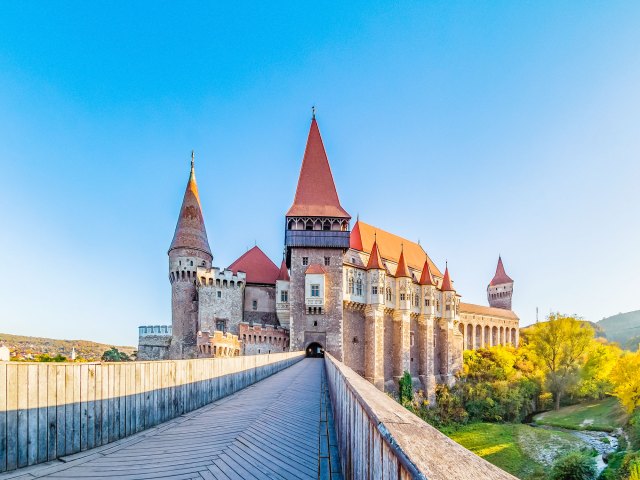Gothic architecture originated in Europe during the Middle Ages. The elaborate style is characterized by flying buttresses (beams that extend outwards from a building to supporting pillars), rib vaults that support ceilings, pinnacles, spires, pointed arches, ornate doorways, and grand stained glass windows. Many of the best examples of Gothic buildings are churches, but over time, the style has evolved, and neo-Gothic landmarks — such as the Tribune Tower in Chicago, Illinois, and the parliament building in Budapest, Hungary — have also taken shape. Consider yourself an architecture buff? Here are six spectacular Gothic buildings to visit around the world.
Cologne Cathedral – Cologne, Germany

Work began on the grand Kölner Dom (Cologne Cathedral) in 1248 and continued, on and off, until the 19th century. The cathedral was built in the Rayonnant Gothic architectural style, which emerged in France in the height of the Gothic period. Impressively, the construction teams across the years stuck faithfully to the same plans — perhaps it’s no wonder, then, that the remarkable church became a UNESCO World Heritage Site in 1996.
In the 1880s, the Cologne Cathedral was the tallest building in the world. It remains the largest Gothic church in Northern Europe, with the tips of its twin spires soaring 515 feet above ground. And that’s not the only super-sized feature: Among the cathedral’s bells is the Petersglocke, which locals have nicknamed the “Pitter.” Cast in 1923, it was the largest free-swinging bell in the world until 2018, when a larger one was made in neighboring Poland.
Notre-Dame de Paris – Paris, France

Restoration work continues on perhaps the most famous Gothic cathedral of all: Notre-Dame de Paris, located on the Île de la Cité in the French capital. Work initially commenced on this glorious cathedral in the 12th century and continued for 300 years. Two early Gothic towers combine with carvings and figures of Old Testament kings to create an imposing western façade. Three magnificent rose windows adorn the cathedral, with the stained glass in the north window dating from the 13th century.
At the opposite end of the building, flying buttresses support the apse. They weren’t in the original plans, but as stress fractures appeared in the thin walls, they were an effective and beautiful fix. In 2019, a fire tragically broke out at Notre-Dame, causing extensive damage to the roof, some of its rib vaulting, and the cathedral’s 19th-century spire. Fortunately, the cathedral has partially reopened to visitors as of 2023.
Leuven Town Hall – Leuven, Belgium

From 1448 to 1469, architect Matthijs van Layens oversaw work on a Gothic-style town hall for Leuven, a central Belgian city located east of Brussels. Though the structure, replete with turrets and balustrades, was in many respects complete by the time the architect finished his work, he left more than 200 alcoves to be filled with statues.
However, that stage of the project ran into difficulties almost immediately. A ship carrying the first five statues sank in a storm, and their replacements were stolen. Five more were ordered and installed, but they came crashing down to the ground in bad weather not long afterwards. It took an angry letter in 1852 from none other than the French writer Victor Hugo to galvanize the authorities into action, and voilà — all 236 niches soon had a statue. The statue of controversial monarch King Leopold II, however, was removed in 2020, leaving 235 on public view.
Milan Cathedral – Milan, Italy

Spread over 109,000 square feet and reaching heights of 345 feet, the Duomo di Milano is Italy’s largest cathedral. Simone da Orsenigo, the chief engineer first tasked with creating it in the 14th century, envisaged building with brick. However, work had barely started when his plan was abandoned, and it was decided the cathedral should be clad in pale pink Candoglia marble instead.
French architect Nicholas de Bonaventure introduced a strong Gothic element to the cathedral, but over the course of its construction many others would have a hand in its design. The marathon project would eventually be completed nearly 600 years later, in 1965. Its roof is particularly popular with tourists, who can inspect its many pinnacles, spires, and flying buttresses as they take in the view over the city.
Rector’s Palace – Dubrovnik, Croatia

This elegant Gothic palace — with Renaissance and Baroque enhancements — was constructed in the 15th century to serve a dual purpose: as the offices and the residence of the Rector (governor) of the Dubrovnik Republic. Onofrio de la Cava, an architect from Naples, was placed in charge of the project, but no one would admire his finished work for long.
A gunpowder explosion in 1463 and a devastating fire in 1667 caused considerable damage to the building. Disaster struck again in 1667, when a powerful earthquake largely destroyed the interior of the Rector’s Palace and its courtyard, necessitating another extensive rebuild. Today, the carefully restored palace houses the city’s Cultural History Museum.
Corvin Castle – Hunedoara, Romania

Corvin Castle — one of the Seven Wonders of Romania — is a 15th-century Transylvanian Gothic-Renaissance castle that was built on top of an older fortress. Some claim it inspired Bram Stoker’s Dracula, though there’s no record the author ever visited here. And what visitors see today is a reconstruction after a fire left the place semi-derelict, with some critics arguing that it’s not as true to the original as it should have been.
Nevertheless, the castle is still a remarkable place. Pointed turrets rise above a drawbridge leading to a stone courtyard. A late Gothic banqueting hall in the castle’s large palace, known as the Knights Hall, features striking cross ribs and marble columns.
More from our network
Daily Passport is part of Optimism, which publishes content that uplifts, informs, and inspires.























